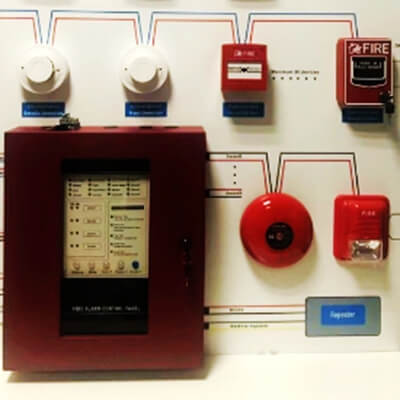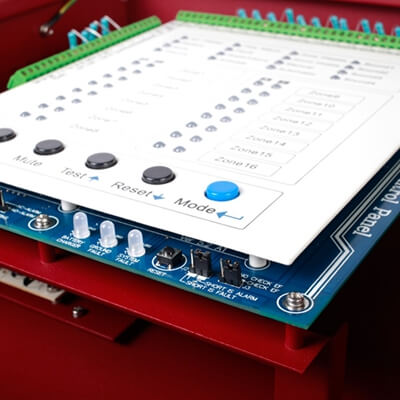The fire alarm control panel in a fire alarm system serves as the central hub that orchestrates the system's response to potential fire events. Here's a detailed breakdown of its functions and features:
-
Core Functions:
-
Input Monitoring: Continuously receives signals from detection devices (smoke detectors, heat sensors, manual pull stations, etc.).
-
Alarm Activation: Triggers audible/visual alarms (horns, strobes) and may activate ancillary systems (e.g., sprinklers, elevator recalls, HVAC shutdowns).
-
Communication: Can relay alerts to emergency services or monitoring centers and integrate with building management systems.
-
-
-
User Interface:
-
Provides status indicators (LEDs, display screens) to show system status, alarms, or faults.
-
Allows manual controls (e.g., silencing alarms, resetting the system, initiating drills).
-
-
Zoning and Identification:
-
In conventional systems, identifies zones (groups of devices) to narrow down the fire location.
-
In addressable systems, pinpoints exact device locations via unique identifiers for faster response.
-

-
-
Backup Power:
-
Includes battery backup to ensure functionality during power outages, as mandated by safety codes (e.g., NFPA 72).
-
-
Integration with Building Systems:
-
Coordinates with HVAC, elevators, and door locks to enhance safety (e.g., preventing smoke spread, enabling evacuation routes).
-
-
Diagnostics and Maintenance:
-
Performs self-tests and logs events (alarms, faults) for compliance and troubleshooting.
-
Alerts to wiring issues or device failures, aiding in proactive maintenance.
-
-
Compliance and Standards:
-
Adheres to regulations like NFPA 72 (U.S.) or local codes, ensuring reliability and proper emergency response.
-
Summary: The fire alarm control panel acts as the system's "brain," integrating detection, notification, and response mechanisms while ensuring resilience, user interaction, and regulatory compliance.
-
 What are the application objects of the fire safety panel ?
What are the application objects of the fire safety panel ?Do you like ?0
Read more -
 Why does the protector fire alarm panel need self inspection?
Why does the protector fire alarm panel need self inspection?Do you like ?0
Read more -
 Do you know the theoretical knowledge of conventional control panel ?
Do you know the theoretical knowledge of conventional control panel ?Do you like ?0
Read more -
 Why do you need a fire safety panel in your building ?
Why do you need a fire safety panel in your building ?Do you like ?0
Read more -
 what buttons of fire fighting control panel that need to push ?
what buttons of fire fighting control panel that need to push ?Do you like ?0
Read more -
 which fire alarm system panels are suitable for your needs ?
which fire alarm system panels are suitable for your needs ?Do you like ?0
Read more








